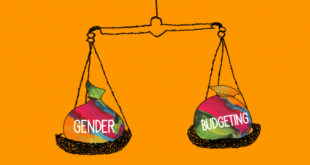Introduction
The Indo-Pacific Economic Framework for Prosperity (IPEF) is a strategic economic initiative launched by the United States in May 2022. It aims to strengthen economic ties among member countries in the Indo-Pacific region, fostering resilience, sustainability, and shared prosperity.
This framework holds significance for regional economies, including India, offering opportunities for growth and collaboration. However, navigating IPEF’s complexities and addressing associated challenges will be crucial for India to maximize its benefits.
Significance of IPEF
Economic Integration and Growth: IPEF fosters economic integration by potentially reducing trade barriers, streamlining customs procedures, and promoting digital trade. This can lead to increased trade flows, foreign investment, and economic growth for member countries.
- Supply Chain Resilience: A key focus of IPEF is strengthening supply chains in the region. This includes collaboration on diversification, risk management, and investment in critical infrastructure. This enhanced resilience can benefit businesses and consumers by mitigating disruptions and ensuring stable access to goods.
- Sustainability and Decarbonization: IPEF promotes cooperation on clean energy development, decarbonization strategies, and sustainable practices. This collaborative approach can accelerate the transition towards a low-carbon future in the region.
- Fair and Transparent Trade: IPEF emphasizes fair trade practices, including combating corruption and promoting good regulatory practices. This can create a more level playing field for businesses and ensure a transparent trade environment.
IPEF and India
India is a founding member of IPEF, but it has chosen a selective participation approach. India is currently engaged in negotiations for three of the four pillars: Supply Chains, Clean Economy, and Fair Economy. It has opted out of the trade pillar for now, citing concerns about potential impacts on its domestic sectors.
- Opportunities for India: IPEF presents opportunities for India in several areas:
- Enhanced Market Access: Negotiations on trade facilitation and standards harmonization could benefit Indian exporters by easing market entry into other member countries.
- Attracting Investments: India’s participation in IPEF’s clean energy and supply chain pillars can attract foreign investments in these crucial sectors.
- Technological Collaboration: Collaboration on clean technologies and digital trade can accelerate India’s technological advancement and integration into global value chains.
- Challenges for India: India also faces challenges in navigating IPEF:
- Balancing Trade Concerns: Finding a balance between trade liberalization and protecting sensitive domestic sectors will be crucial for India.
- Meeting Regulatory Standards: Harmonizing Indian regulations with higher IPEF standards might require significant adjustments.
- Capacity Building: India may need to invest in capacity building to fully benefit from IPEF’s technical cooperation and knowledge sharing initiatives.
Opportunities Associated with IPEF
- Trade Diversification: IPEF can help India diversify its trade partnerships, reducing dependence on traditional markets.
- Enhanced Competitiveness: By adhering to higher standards and adopting best practices, Indian businesses can become more competitive in the global marketplace.
- Access to New Technologies: Collaboration with IPEF partners can provide India with access to cutting-edge technologies in clean energy, digitalization, and other areas.
- Attracting Talent: A more integrated regional economy can attract skilled talent from other member countries, benefiting India’s growth prospects.
Challenges Associated with IPEF
- Negotiation Complexity: The complexity of negotiations, balancing diverse interests of member countries, can lead to slow progress and potential compromises that may not fully satisfy India’s needs.
- Geopolitical Tensions: Regional geopolitical tensions can affect the overall effectiveness of IPEF and limit cooperation on certain issues.
- Domestic Political Resistance: Implementing IPEF’s provisions might face resistance from domestic stakeholders who perceive potential threats to certain sectors.
- Meeting High Standards: Meeting stricter environmental and labor standards could pose challenges for some Indian industries, requiring significant investments and adjustments.
To maximize its benefits from IPEF, India can adopt a strategic approach:
- Active Participation: India should actively engage in negotiations, clearly articulating its interests and concerns to ensure a balanced outcome.
- Building Domestic Consensus: Building domestic consensus among stakeholders, including industry, will be crucial for smooth implementation of IPEF’s provisions.
- Focus on Capacity Building: Investing in capacity building initiatives can help Indian businesses and regulatory bodies adapt to higher standards and technological advancements.
- Leveraging Technical Assistance: India should actively seek technical assistance offered by IPEF partners to bridge knowledge gaps and enhance its technical capabilities.
 Chinmaya IAS Academy – Current Affairs Chinmaya IAS Academy – Current Affairs
Chinmaya IAS Academy – Current Affairs Chinmaya IAS Academy – Current Affairs

